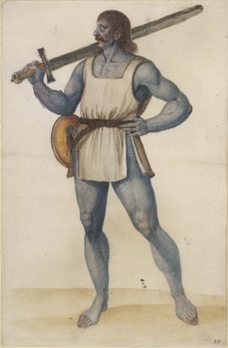Tribal Tattoos
- kalash
- Feb 6, 2018
- 6 min read
Updated: May 12, 2021

Tattoos are very popular within our dance community and there are plenty of articles on the internet with information about the history of the tattoo in various cultures and countries as well as some fascinating reading on “The Tattooed Lady” on Wikipedia
FatChanceBellyDance® began in San Francisco as part of the alternative underground scene in the 1980's and as Carolena Nericcio, the creator of our dance, was tattooed it attracted other tattooed women. Today many women have found confidence through the dance and get tattooed as an affirmation of the beauty of their body, but it is by no means a pre-requisite!
The history of tattoo is as diverse as the people who wear them and the first proof we have of actual tattoos was with the finding of Ötzi, nicknamed ‘The Ice Man’, who died about 5300 years ago, although artefacts and tattooing tools, thousands of years older, have been found all over the world.
He was discovered in 1991 by some hikers in the mountains on the Austro-Italian border.
He is the oldest mummy ever discovered, dating back to the ‘Copper Age’, and scientists believe that the purpose of his 61 carbon-ink tattoos, consisting of 19 groups of simple dots and lines, may have been for healing purposes rather than body adornment. The ancient Egyptians and Indians also used tattooing for medical purposes.
The tattoos were made by making cuts and then rubbing soot or ash into the wounds so the pigments would become trapped once the wounds healed.

"In 2003 my family and I stayed with the Barbeig tribe in Tanzania where some of the women still practise the same method for tattooing their faces. They told me it is a sign of beauty but very painful, some of the younger women are now choosing not to put themselves through this process."
In the UK, during the Iron Age, when the Romans invaded in 55BC, the tribes here were mainly of Celtic origin and proof of tattooing was recorded by Julius Caesar in his account of the Gallic Wars, saying that “All the Britons dye themselves with woad, which produces a blue colour, and makes their appearance in battle more terrible.”
John White's drawings in the British Museum, based on the descriptions by Roman scholars, show his interpretation of what the Celtic or Pict warriors would have looked like, their blue bodies being covered in fantastical animals and patterns. He was commissioned to paint portraits of them, together with three Inuits taken hostage in 1577, shown to the court of Queen Elizabeth l and the general public, who were shocked and frightened at the sight of them. The idea being to show the similarities between the body drawings of the captured Inuit and our Celtic ancestors to subsequently allay fears.
The very name of my homeland comes from a Celtic word Pretani which means ‘the Painted People’ or ‘Tattooed Ones' and was recorded as Pretannike by the Greek writer Diodorus Siculus in the first century BC. The ‘p’ in classical Greek and Latin often becomes a ‘b’ and so we get Britannia. Even today the Welsh word for Britain is Prydain
The painted people are mentioned again in several later texts as the Romans continued their battles against them. The northern tribes of Caledonia (Scotland), which the Romans called the Picti (Latin meaning painted ones, Greek ‘pyktis means picture), are nowadays known as the Picts.
There has been much debate as to whether it was a form of body painting or tattooing but
Caesar also said that the Britanni had “designs carved into their faces by iron” and in the 3rd Century BC Gaius Julius Solinus wrote “that the region is partly held by barbarians who from childhood have different pictures of animals skillfully implanted on their bodies so that as the man grows, so grow the marks painted on him.”
The finding of another mummy “Lindow Man’ in Cheshire, England in 1984 raised questions about whether woad was used to dye the skin, further findings at the Iron Age Dragonby settlement near Scunthorpe gives credence to the fact as woad was found there.

Woad contains a natural antiseptic which may have been used in tattoos medicinally or would have naturally protected against infection making the tattoos successful, unlike the scene here, where I watched several people being tattooed with the same needle in a market in Khajuraho, India
Tattoos are as diverse as the people who wear them. They can be permanent, semi permanent or even temporary.
Temporary tattoos are sometimes used as part of our facial makeup - again they are optional but an understanding of their use and symbolism by other cultures can ensure we are empathetic and inoffensive.
Throughout history facial tattoos have, in some cultures, been used to mark people, in a deliberate attempt for all to see, as criminals or to denote ownership, as in the case of slaves. Indeed facial tattoos have been and are still used by prisoners and gangs, with various meanings.
However, they have also been used by many many indigenous tribal societies including my own. They are often associated with spiritual beliefs, mourning, rites of passage, of being a woman and tribal affiliation. In some cultures it is regarded as a thing of great beauty, whereas in others it is a deliberate act of disfigurement for protection, making the women less attractive to men of rival tribes. In Amazigh and Moroccan cultures there is mixed response when asked about the significance of their tattoos from just decorative to deeply symbolic, but the practise is dying out and some women sadly now feel shamed by their facial tattoos.
Whereas, for today's Maori women, there is a resurgence and great pride in their traditions.
The Maori people of New Zealand often tattoo the face, which is the ultimate statement, as the head is considered the most sacred part of the body. The women mainly wear their markings on the chin and occasionally on the forehead. The process is a little different so rather than marking the skin with ink and needles they practise 'ta moku' which scars the skin with cuts made by chisels and applied ink. The markings truly identify the wearer by representing their genealogy 'whakapapa', their social standing and belonging. As a result of colonialism and visiting missionaries in the late 1800's the practise of 'moko kauae' (sacred female facial tattooing) started to die out but today there is a strong resurgence in protecting the Maori traditions.
In Hawaii too there is a renaissance of the traditional method of hand tapped tattoos which almost died out after contact with the West - again there is a deep and sacred meaning with the tattooist choosing the meaning based on genealogy rather than the receiver choosing the design.
On my travels I have sometimes stayed with tribal people where the people have accepted me and given me tribal markings with temporary tattoos to welcome me in to their family or community. In Ecuador the Amazonian Cofan tribe use the juice from the crushed seeds of the achiote fruit to create a dye for their 'face paints' and marked me with bright red patterns. Whereas the Dayak women of Kalimantan (Borneo) used black and the young girls of the Embera tribe in the Choco region of Colombia spent hours dipping thin strips of bamboo into a plant based black dye made from the jagua fruit, which they placed on my arms in meticulous geometric markings.
In many cultures the markings denote belonging and that is the reason why the original members of FatChanceBellyDance chose to use them. In an article in Tribal Talk by Adriene Rutherford in May 1997 she wrote "facial tattoos are an element of an overall tribal aesthetic that not only distinguishes the style of dance but truly represents the cohesive bond that is felt between dancers. The tattoos are individual and personal, but the use of them represents a common vision as a tribe."

This dance style has not only given me an understanding of how we connect with our fellow dancers, whether in class, with troupe mates or with other dancers all over the world but also with the past - the dancers who came before.
I love history and knowing my roots and where I came from and have an absolute passion for genealogy. I've been studying my family's ancestry for the last 40 odd years and my DNA shows a high percentage of Celtic ancestry. So my temporary facial tattoos reflect this, I often wear three small dots by my eyes which have personal meaning to me. Three is a sacred Celtic number with the dots being inverted representing the feminine, the Goddess, Maiden, Mother, Crone or a simplified version of the Triskelion (3 interlocking spirals) - to some however it could also mean I'm a gang member or have served time in prison!!!!
Sometimes I wear a simple design of 3 lines or my zodiac sign on my chin with dots and dashes on my nose which my research shows means absolutely nothing to any other culture or anyone else but me.
Sources and further reading: (this article was first published in June 2018 additional further reading will be updated from time time)
Oxford Journal of Archaeology 1993
Tribal Talk - FCBD®






























